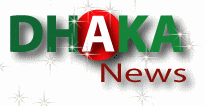The argument that this time will be different, moreover, rests on a shared hope that inflation in the post-pandemic world will behave in the same way as before – in other words, at lower rather than higher levels, and with much less need for subpar inflation. With output or rising unemployment to control it.
It’s a view that, sidestepping the term, still regards the current bout of inflation as at least somewhat transitory, the product of a once-in-a-century readjustment of the pandemic and the impact on commodity prices from Russia. Additional pressure invasion of Ukraine.
Interest rates are being raised to provide sufficient demand checks to ease pricing pressures and keep public inflation expectations under control as those distortions pass and past inflationary trends re-emerge.
Notably, after one of the most violent shocks to the global economy, geopolitical tensions and a still-unresolved war in Europe, Fed policymakers’ average estimate of the long-term policy rate, consistent with stable inflation, remained at 2.5%. Has happened – as it has been – since June of 2019, a moment of extreme confidence in the notion of a largely deflationary world.
The prospect of a gradual return to pre-pandemic conditions as well as a fall in inflation lies in how central banks are charting the way forward.
Between the Fed, ECB and BOE, only the British central bank projects a recession would be needed to slow inflation – only a mild one at that. The ECB hopes to win its inflation battle with no change in the unemployment rate. US central bank officials have split the difference, forecasting a modest one-percentage-point increase in the unemployment rate this year, a near-historic low of 3.5%, and slower, but continuing, economic growth. Is.
In contrast to that outlook, Fed policymakers indicated last month that another quarter-percentage-point rate hike at their May 2-3 meeting, which would push the policy rate to a 5.00%-5.25% range, would be the first step in this tightening cycle. May be the last of .
The BoE and ECB are likely to move beyond a rate-hike pause, but a Fed halt would send a powerful signal that the era of synchronous tightening is over, with central bankers waiting for the effects of tighter financial conditions and economies to normalize. Has entered into holding pattern for Rs. To be felt at the prices.




